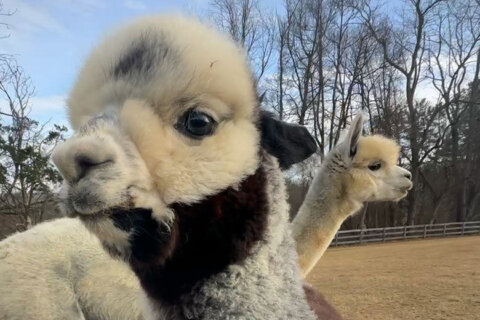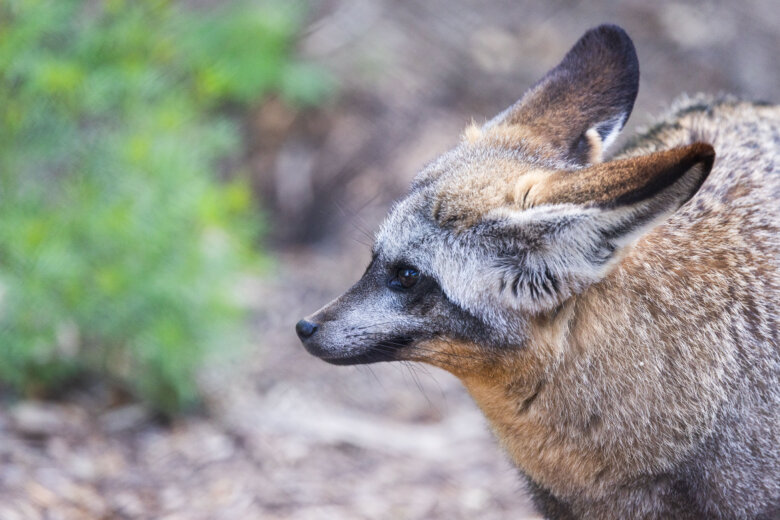This video is no longer available.
Have you ever wondered why planes don’t often hit birds while in the sky?
Hidden behind a maze of “employees only” elevators, hallways and doors on the secluded sixth floor of the Smithsonian’s Museum of Natural History, you’ll find what is perhaps the most interesting “crime lab” in D.C., dedicated to keeping you safe in the air.
The Smithsonian “Feather Identification Lab” pinpoints species of birds that are hit by aircraft strikes — all in an effort to improve aviation and bird migration safety. You may not know anything about them, but their research is present in just about every trip you take onboard a plane.
In today’s episode of “Matt About Town,” WTOP’s Matt Kaufax got exclusive access to the Feather ID Lab, via a tour with program director Carla Dove. (Yes, her last name is Dove. Yes, she works with birds. She’s heard all the jokes before.)
With the help of Carla and her flock of researchers, Matt saw firsthand every meticulous step of the feather identification process, which starts the moment a bird collides with a plane in the air.
The process involves airport biologists from across the country gathering the remains on the ground, then sending them to the lab in D.C. After that, the lab puts the pieces of the crash back together, something one worker told Matt they call “reverse birding.”
The lab uses a complex and nuanced system that combines sophisticated molecular DNA testing with the expertise of the researchers who work there. As Matt found out, sometimes a pair of human eyeballs can be almost as useful as DNA testing in the identification process.
That’s because the sixth floor of the Museum of Natural History doesn’t just house the Feather ID Lab, it’s also the entire Smithsonian bird archive. It’s a repository of 500,000 fully intact bird specimens — over 8,500 species — that the Smithsonian has used its considerable resources to collect over the past 150 years. They’re preserved through a unique fumigation and taxidermy process than ensures they’ll remain whole in perpetuity.
Remember the 2009 “Miracle on the Hudson?” Carla and her team were involved the moment Capt. Sully Sullenberger landed that plane!
And they learned a lot about Canada geese in the aftermath of the historic aviation incident.
The work that Carla and her team do, and the work that has been done for the last 50 years at the Feather ID Lab, has become so ubiquitous in aviation that there are now full databases, used by the FAA and others, in place to manage bird migratory patterns.
The Civil Aviation Wildlife Strike Database is used for passenger air travel. The U.S. Air Force also uses something called the Bird Avoidance Model (BAM) for missions and practice exercises, where aircrew can consult a log of historical bird strikes that happened in a given area — down to the exact time of day the strike occurred.
Carla said aircraft engineers have even used the research done in the Feather ID Lab to modify aircraft parts, and actually inform the construction of new planes.
Come along with Matt as he explores the Smithsonian’s floor-to-ceiling archive of colorful (and dead) birds from all corners of the globe, and sees how a clump of “snarge” (a whimsical term coined by Carla’s team to describe bird remains from an incident), can go from a messy post-plane strike incident to a fully formed bird in a state-of-the-art lab.
You can learn more about the Feather ID Lab on the Smithsonian’s website.
Hear “Matt About Town” first every Tuesday and Thursday on 103.5 FM!
If you have a story idea you’d like Matt to cover, email him, or chat with him on Instagram and TikTok.
Check out all “Matt About Town” episodes here!
Get breaking news and daily headlines delivered to your email inbox by signing up here.
© 2024 WTOP. All Rights Reserved. This website is not intended for users located within the European Economic Area.








